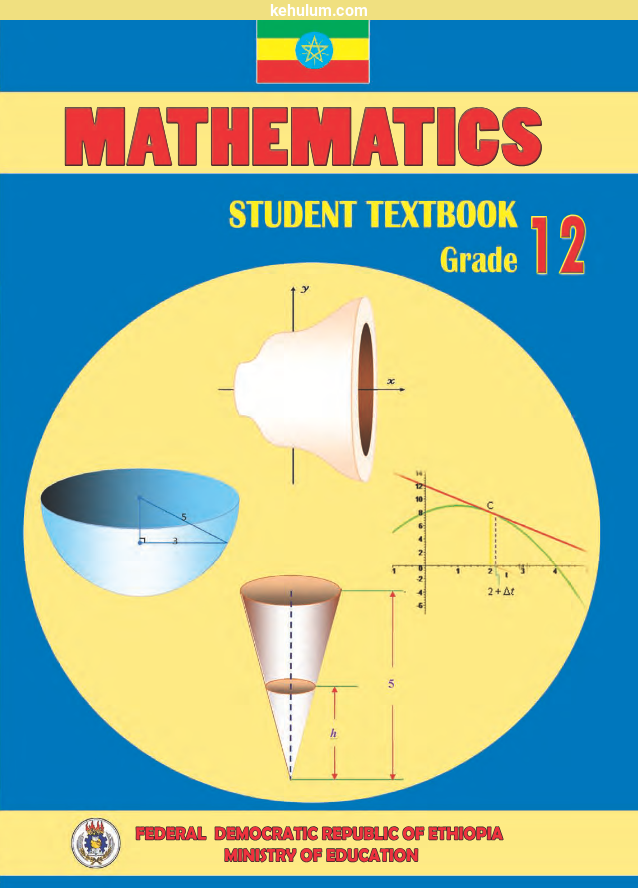The Grade 2 Mathematics Student Textbook under the Ethiopian Old Curriculum consists of nine units (ምዕራፎች). The book gradually develops students’ numerical reasoning, problem-solving, and real-life application skills. Through hands-on activities, examples, and exercises, it guides students to understand numbers, operations, measurement, geometry, time, and data management in a structured and age-appropriate way.
- ምዕራፍ 1: አስከ 100 ያሉ ሙሉ ቁጥሮችን መደመርና መቀነስ (Adding and Subtracting Whole Numbers up to 100)
- ምዕራፍ 2: ማባዛትና ማካፈል እስከ 100 (Multiplication and Division up to 100)
- ምዕራፍ 3: ልኬት (Measurement)
- ምዕራፍ 4: የክፍልፋዮች ፅንሰ ሀሳብ መግቢያ (Introduction to the Concept of Fractions)
- ምዕራፍ 5: ሙሉ ቁጥሮች እስከ 1000 (Whole Numbers up to 1000)
- ምዕራፍ 6: ነጥቦች፣ ቀጥታ መስመሮች እና ቅርጾች (Points, Lines, and Shapes)
- ምዕራፍ 7: ገንዘብ (Money)
- ምዕራፍ 8: ጊዜ (Time)
- ምዕራፍ 9: መረጃ አያያዝና ድርድር (Information Management and Discussion)
Chapters overview
Chapter One: Adding and Subtracting Whole Numbers up to 100 (የምዕራፍ 1: አስከ 100 ያሉ ሙሉ ቁጥሮችን መደመርና መቀነስ)
This chapter reviews whole numbers from 1 to 100 and introduces addition and subtraction concepts up to 20. Students practice adding and subtracting one-digit and two-digit numbers with and without carrying, as well as solving word problems involving these operations. Exercises include combining numbers, using mental math, and applying addition and subtraction in everyday contexts.
Chapter Two: Multiplication and Division up to 100 (ምዕራፍ 2: ማባዛትና ማካፈል እስከ 100)
Students are introduced to multiplication and division as repeated addition and subtraction. They practice multiplying and dividing numbers by 2, 10, 0, and 1, and later expand to other numbers from 3 to 9. This unit helps students develop foundational understanding for higher arithmetic operations, focusing on accuracy and pattern recognition.
Chapter Three: Measurement (ምዕራፍ 3: ልኬት)
This chapter focuses on practical measurement skills. Students measure length in centimeters and meters, and learn to add and subtract lengths. They also explore volume using liters and weight using kilograms. Simple exercises reinforce converting, comparing, and performing operations with measurement units.
Chapter Four: Introduction to the Concept of Fractions (ምዕራፍ 4: የክፍልፋዮች ፅንሰ ሀሳብ መግቢያ)
Students are introduced to fractions through simple examples like halves, quarters, and thirds. The concept of “parts of a whole” is developed using visual aids and everyday examples such as dividing fruits or objects. The chapter emphasizes understanding rather than memorization.
Chapter Five: Whole Numbers up to 1000 (ምዕራፍ 5: ሙሉ ቁጥሮች እስከ 1000)
This chapter extends number knowledge up to 1000. Students learn about multiples of 100, place values (hundreds, tens, and ones), and sequencing of numbers. They practice reading, writing, and comparing three-digit numbers to strengthen numerical fluency.
Chapter Six: Points, Lines, and Shapes (ምዕራፍ 6: ነጥቦች፣ ቀጥታ መስመሮች እና ቅርጾች)
In this geometry-focused chapter, students learn to identify and draw shapes such as rectangles, squares, triangles, and circles using a ruler. They also explore shapes found in the environment and discuss their properties through visual observation and hands-on drawing exercises.
Chapter Seven: Money (ምዕራፍ 7: ገንዘብ)
Students are introduced to Ethiopian currency and practice adding and subtracting money in real-life situations. Activities such as simple market role-play help them understand the value of coins and notes and develop practical money-handling skills.
Chapter Eight: Time (ምዕራፍ 8: ጊዜ)
This chapter teaches students how to tell and calculate time using hours, half-hours, and quarter-hours. They practice reading clocks, connecting time to daily routines, and understanding the relationship between hours and minutes.
Chapter Nine: Information Management and Discussion (ምዕራፍ 9: መረጃ አያያዝና ድርድር)
The final chapter introduces students to simple data collection and organization. They learn to create and read simple tables and charts, arrange numbers and shapes, and interpret basic information. This develops early analytical and communication skills using visual data.

















